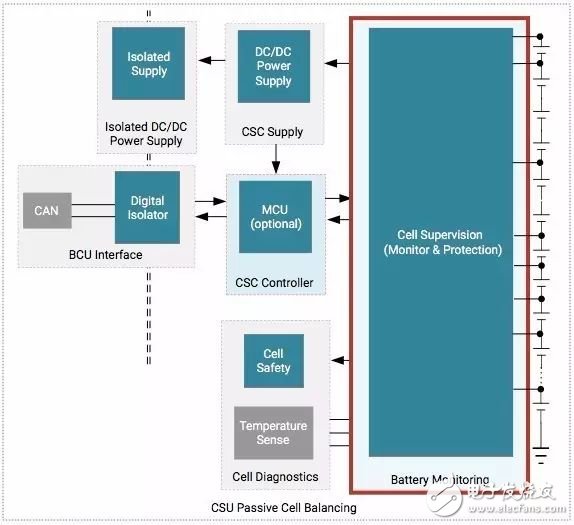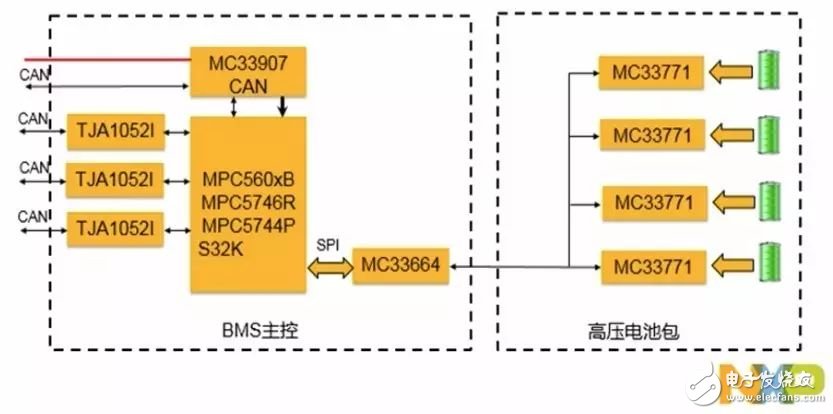BMS Power management system According to the report of the International Energy Agency, in 2016, the number of electric vehicles driving around the world reached 2 million. By 2020, the number of electric vehicles in the world will increase to 9 million to 20 million, and this figure will increase to 40 million in 2025. - 90 million, the acceleration of market growth is amazing. However, people will be "stunned" at the same time, as well as electric vehicle safety accidents that are reported from time to time. Some people analyzed 49 electric vehicle accidents in China since 2010 and found that 50% are related to "batteries". It is no wonder that the battery pack, which is the "heart" of electric vehicles, is made up of thousands of single-cell lithium batteries. Lithium batteries are currently the most energy-intensive commercially available battery technology. It is estimated that the global lithium-ion battery demand in 2017 is about 50GWh. The "magic" of lithium batteries lies in the inherent instability of lithium materials. If you encounter problems in overcharging, over-discharging, over-temperature, etc., or in the manufacturing process and structural materials, it is likely to explode. ACCIDENT. Therefore, it is necessary to let the lithium battery provide strong energy for the electric vehicle, and to control it well with the "magic" electrochemical reaction process, which requires a big god role to play. It is the BMS (Power Management System). BMS is a new technology developed along with the development of electric vehicles. However, due to the special safety requirements of the "car" product, people have more hopes for the function of BMS: BMS needs to prevent overcharging, Avoid over-discharge, temperature control, battery pack voltage and temperature balance, predict battery remaining capacity and remaining mileage; at the same time, BMS also has the ability to monitor and adjust battery management status in real time, synchronized with multiple parallel subsystems Ability to coordinate work. In short, BMS is a complete monitoring system for monitoring, analyzing, controlling and feedback of power batteries, ensuring efficient and safe operation of power batteries, which is the core responsibility of BMS. From the technical architecture of BMS, its core functions include: Accurate battery status estimation. That is, accurate measurement and estimation of parameters such as SOC (charge state), SOP (power state), and SOH (health state) of the battery pack can complete dynamic monitoring and diagnose the state of each battery. Establish historical data files to provide a basis for data analysis and control decisions. Energy balance. Since the performance of each battery in the battery pack will be different in actual work, this difference will have an adverse effect on the battery life and the use of the system. Therefore, it is necessary to compensate for the difference between the individual cells by means of energy balance. Consistency, continuous and dynamic "maintenance" of the battery pack. At present, there are two energy equalization strategies, active balance and passive equalization, which are used in BMS, and each has its own characteristics (see Table 1 for details). Protective function. Reliable overcharge, overdischarge protection, overcurrent, overtemperature, low temperature protection, multi-level fault diagnosis and protection, to ensure a quick response in the event of a fault. Data communication function. Data communication mechanism is established through CAN bus or other means, and data is transmitted to external devices such as display system, vehicle controller, charger, etc., and even wireless transmission function can be provided to connect to the cloud. Table 1. Comparison of passive equalization and active equalization techniques In order to support the above functions of the BMS, various technology vendors are actively developing products and solutions. For example, Maxim Integrated's MAX14920/MAX14921 battery measurement analog front-end devices support high-precision sampling of battery voltages and provide level shifting to support up to 16 cells/+65V (max) of primary/secondary battery packs through external FETs. The drive supports passive battery equalization. If Maxim Integrated offers a high-performance "single product," Texas Instruments (TI) offers a "package." Based on TI's bq76PL455A-Q1 integrated 16-cell battery monitoring and protection device, a complete passive battery equalization solution can be built. The bq76PL455A-Q1 monitors and detects multiple faults including overvoltage, undervoltage, overtemperature, and communication faults, allowing up to sixteen bq76PL455A-Q1 devices to communicate with the host over a single UART interface. Figure, TI's passive battery equalization scheme With its complete automotive electronics product line, NXP offers complete battery management system solutions including microcontroller MCUs, analog front-end battery controller ICs, isolated network high-speed transceivers, and system-based chip SBC. Customers can manage high pressures up to 800V. Figure, NXP overall BMS solution In addition to the above-mentioned chip-level "hard work", the design of a BMS system also requires the corresponding "soft power", that is, the development of core algorithms. An excellent algorithm not only improves the accuracy of battery pack state estimation, but also has a strong error correction capability, which can offset the impact of hardware factors such as battery quality, making the battery not consistent. It also enables precise control, saving overall system cost. The advantages and disadvantages of the algorithm are also reflected in the hardware resource overhead required. The efficient algorithm can be completed with a small amount of CPU computing resources, which greatly improves the efficiency of the system. According to forecasts, the market size of China's automotive power batteries will reach 120 billion yuan by 2020. By then, the market size of domestic BMS for electric vehicles will reach 17 billion yuan. Although the cost of BMS in the entire electric vehicle is not high, in order to ensure that the power battery will not become a "bomb", developers should really regard the BMS as a "God"-like existence, so that it is deeply rooted in electric The design concept of the car. Mini Power Bank,Small Power Bank 10000mah,Mini Power Bank for Iphone,Power Bank Mini Pogo Technology International Ltd , https://www.wisesir.net

